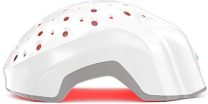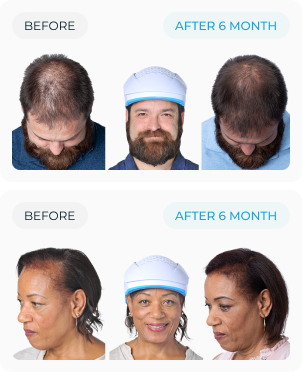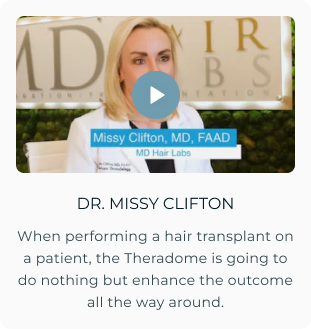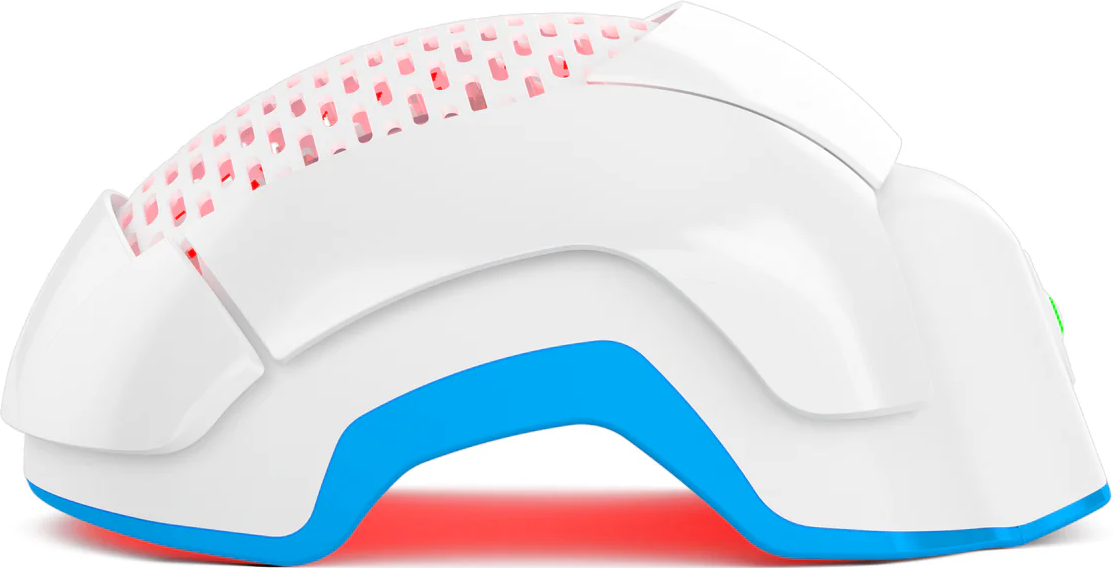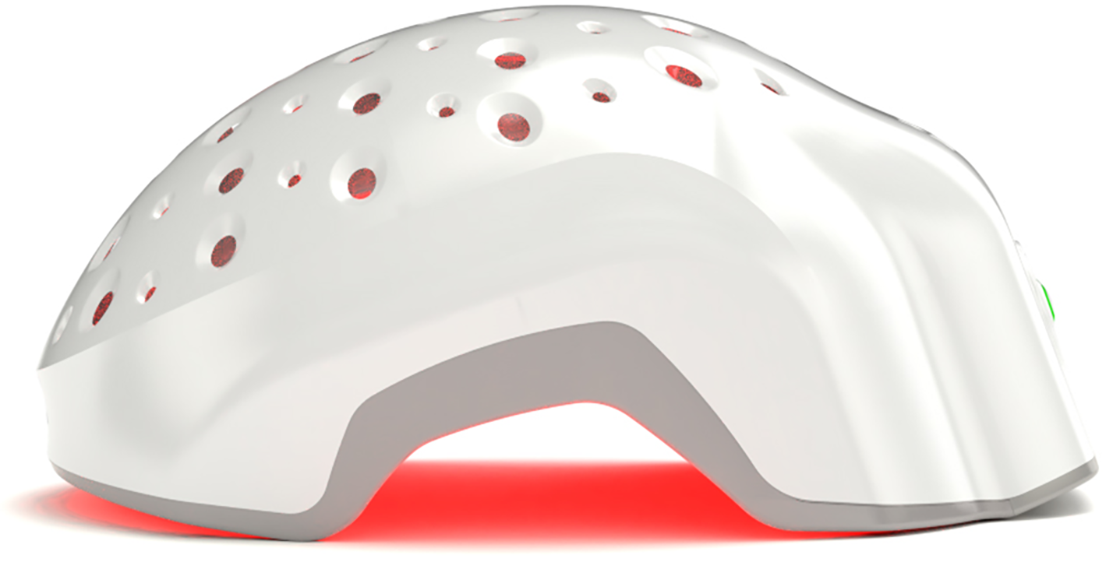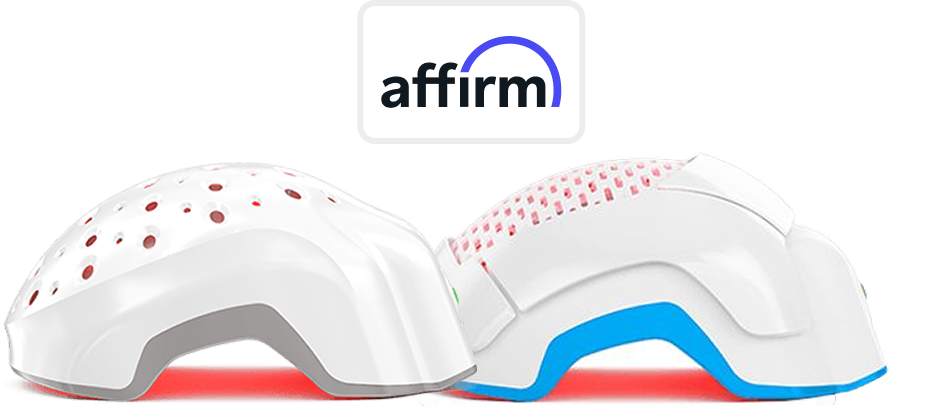When it comes to hair loss, the usual suspects—stress, genetics, aging—get all the attention. But there’s a lesser-known culprit that might be quietly thinning your strands: Iron Deficiency Anemia (IDA). Yes, the same condition that leaves you feeling fatigued, pale, and out of breath could also be the reason your hair is looking a little sparse.
So, can iron deficiency cause hair loss? Absolutely.
Iron plays a crucial role in transporting oxygen to every cell in your body, including your hair follicles. When your iron levels dip, your follicles don’t get the oxygen they need to thrive. This can push them into a premature "resting" phase, leading to hair thinning and increased shedding. For many, it’s a connection that’s often overlooked until a brush full of hair forces the conversation.
In this blog, we’ll discuss how Iron Deficiency Anemia (IDA) impacts hair health, the science behind why it happens, and how you can treat and potentially reverse hair loss caused by iron deficiency.
What is Anemia (Iron Deficiency)?
Anemia occurs when your body doesn’t have enough red blood cells to carry oxygen throughout your system. Iron deficiency anemia happens when your body lacks sufficient iron, which is critical for producing hemoglobin. Hemoglobin transports oxygen to cells, including hair follicles, which rely on oxygen to stay healthy. Without enough iron, your hair follicles may not get the oxygen they need, leading to hair thinning or loss.
Causes of Anemia
- Poor diet lacking in iron-rich foods
- Heavy menstrual periods
- Pregnancy and breastfeeding
- Gastrointestinal disorders affecting iron absorption
- Chronic diseases like kidney disease
- Hormonal disturbances, such as thyroid disorders
- Side effects from medications, including some antibiotics, cancer treatments, and drugs that affect bone marrow function
- Malabsorption syndromes like celiac disease affecting iron absorption
Symptoms of Anemia
- Fatigue and weakness
- Pale or yellowish skin
- Shortness of breath
- Dizziness or lightheadedness
- Brittle nails or spoon-shaped nails
- Hair thinning or hair loss
How to Diagnose Iron Deficiency Anemia
To determine if iron deficiency anemia is contributing to hair loss, doctors often recommend a blood test to check your iron levels. One key indicator is transferrin saturation, which measures how much iron is bound to transferrin, a protein that transports iron through your blood. Low transferrin saturation, typically below 20%, may suggest iron deficiency, even if your total iron levels appear normal.
Another vital marker checked in a blood test is ferritin, a protein that stores iron in your body. Low ferritin can indicate depleted iron reserves, which may impact hair growth. Experts consider ferritin levels below 30 ng/mL to be associated with increased hair shedding, especially in women. Monitoring ferritin can help identify early signs of iron deficiency before more obvious symptoms appear.
These detailed assessments help pinpoint hidden deficiencies that could be affecting your hair health.
Role of Iron in Hair Health
Iron isn’t just your blood’s best friend, it’s also a key player in maintaining a healthy scalp and supporting hair growth. Iron plays a crucial role in the production of hemoglobin, the protein in red blood cells responsible for carrying oxygen throughout your body, including your hair follicles. And here’s the thing: hair follicles thrive on oxygen. When your body lacks sufficient iron, the oxygen supply to your scalp decreases, and your hair follicles are left gasping for air. The result? Weakened follicles prematurely enter the “resting” phase (telogen), where shedding occurs more easily, leading to Telogen Effluvium.
Now, while anemia and scalp health might not seem like an obvious connection, the oxygen-starved follicles caused by iron deficiency can wreak havoc on your hair growth cycle. Without adequate oxygen, your hair doesn't just slow down in growth—it may stop altogether. Ensuring your iron levels are up to par helps your follicles stay in the active growth phase (anagen), promoting healthier, thicker hair. Essentially, iron acts as the fuel that keeps your hair growth engine running.
So, how do you give your follicles the iron boost they need?
A balanced, iron-rich diet for hair growth can do wonders. Foods like spinach, lentils, red meat, and fortified cereals are all excellent sources of iron. But here’s a tip: combining iron-rich foods with a source of vitamin C (like citrus fruits) can improve iron absorption and give your hair that much-needed leg up. Because, let's face it, nobody wants to see their hair taking an unplanned vacation down the shower drain.
Also Read: Importance of Blood Flow for Hair Growth
Can Anemia Cause Hair Loss?

Multiple studies have found a significant link between iron deficiency and hair loss, particularly in women. When your iron levels drop, the first tissues to feel the impact are non-essential ones like hair follicles. Hair follicles are highly sensitive to changes in nutrient and oxygen supply, so low iron levels can disrupt the hair growth cycle, leading to excessive shedding.
However, it’s worth noting that not everyone with anemia will experience hair loss, and the extent of hair thinning varies from person to person. Genetics, hormonal imbalances, and other factors can also play a role in how much hair loss is experienced.
Is Hair Loss from Iron Deficiency Reversible?
Good news for anyone fretting over thinning strands caused by low iron levels—reversing hair loss due to anemia is often possible. Once you restore your body's iron stores, your hair follicles usually recover and return to their normal growth cycle. But like all good things, iron deficiency hair loss regrowth requires patience. The hair follicles need time to shift back into their active growth phase (anagen), and this process can take anywhere from three to six months.
The key to reversing hair loss from anemia is addressing the root cause: iron deficiency. Iron supplements, paired with an iron-rich diet, can boost your iron levels and help kickstart regrowth. But keep in mind, your body prioritizes essential organs over non-essential ones like hair follicles, so regaining your energy might happen faster than seeing those baby hairs sprout again.
However, it’s crucial to avoid overloading on iron supplements without medical guidance. Too much iron can have negative side effects, and your regrowth journey could take a detour into territory you don't want to visit. Consulting a healthcare provider ensures you’re on the right track to getting both your health and your hair back in check.
How to Treat Hair Loss Due to Anemia
1. Iron Supplements
One of the most direct ways to address iron deficiency is by taking iron supplements. These supplements help restore iron levels in the body, which in turn supports healthier hair growth. However, it’s important to consult with a healthcare provider before starting any supplement regimen, as excessive iron intake can cause side effects.
2. Iron-Rich Diet
A diet rich in iron is another effective way to combat iron deficiency and hair loss. Incorporating foods like red meat, spinach, lentils, and fortified cereals can help you maintain healthy iron levels. Pairing iron-rich foods with sources of vitamin C (such as oranges or strawberries) can also boost iron absorption.
3. Topical Treatments
For those seeking quicker hair regrowth, topical treatments like minoxidil can be beneficial. Minoxidil helps stimulate hair follicles to re-enter the growth phase, promoting regrowth in areas affected by thinning. While it doesn’t address the underlying iron deficiency, it can be a helpful addition to your hair care regimen.
4. Low-Level Laser Therapy (LLLT)
Low-level laser therapy (LLLT) is a non-invasive treatment that can benefit both men and women dealing with anemia-related hair loss. LLLT stimulates blood flow to the scalp and enhances cellular activity in the hair follicles, promoting regrowth. Laser hair growth devices like Theradome, designed for at-home use, have become increasingly popular, and studies suggest that combining LLLT with iron supplements may yield better results.
Conclusion
Can anemia cause hair loss?
Absolutely. Iron deficiency impacts hair health by depriving your hair follicles of the oxygen they need to thrive. Fortunately, in most cases, correcting your iron levels—whether through supplements, diet changes, or medical treatments—can reverse hair loss and restore your strands. If you think anemia might be behind your hair woes, consult with a healthcare provider for a proper diagnosis and treatment plan.



